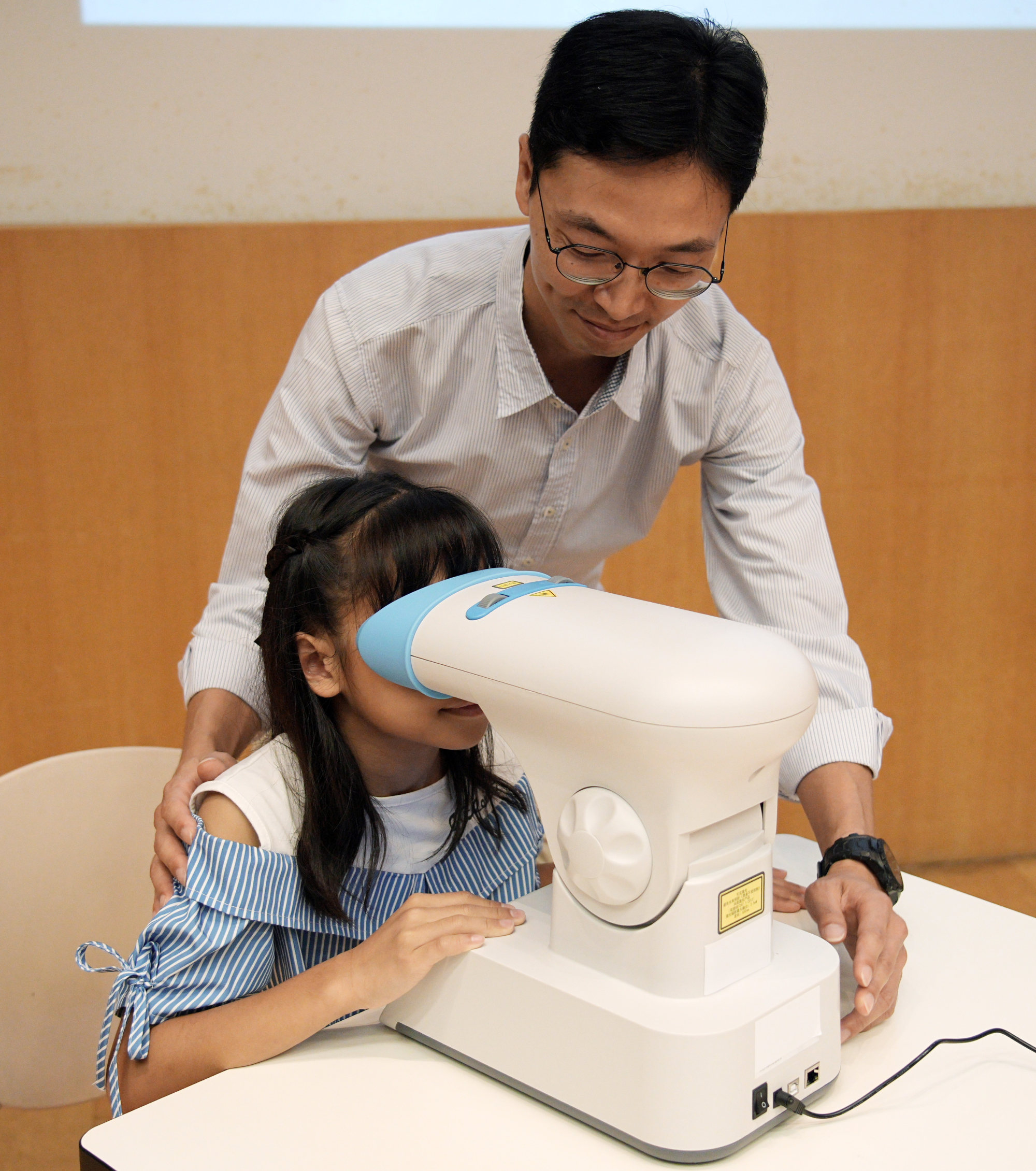
Number of Hong Kong children with myopia hit record high during Covid pandemic amid greater reliance on screens, study finds
- Chinese University researchers warn lifestyle habits contributing to nearsightedness among children aged six to eight have continued even after pandemic ended
- ‘If we do not do something drastic now to reduce the progression of myopia, these children will have serious problems in many years to come,’ they add
Associate Professor Jason Yam Cheuk-sing, of the university’s department of ophthalmology and visual sciences, also warned the pandemic trends of children spending less time outdoors and using electronic products more had continued even after the city lifted its pandemic restrictions.
“We are all very thankful that the Covid pandemic has passed, but unfortunately, our message today is that the lifestyle established [during the pandemic] has not returned to [the one] before Covid-19,” he said.
Covid-19 rules contributed to upsurge in myopia in Hong Kong children, study finds
The university study analysed the prevalence of myopia, or nearsightedness, among 20,527 children aged six to eight across three periods between 2015 and 2021.
A further breakdown of the data showed the prevalence of myopia nearly doubled among six-year-olds between the two periods, shifting from 13.9 per cent to 25.2 per cent.

The overall annual figure for all three age groups in 2021 stood at 35.9 per cent, compared with 24.9 per cent recorded in 2015.
The research team said the annual figure and those from between March and December 2021 were record highs.
Yam said factors such as poor reading habits, a reduction in time spent outdoors and a rise in the usage of electronic devices had largely contributed to the greater prevalence of myopia among children.
One of the children who took part in the study, 10-year-old Kate Law Hiu-ching joined the researchers on Wednesday as they revealed the report findings.
Her father, Law Chi-kuen, said he had felt shocked after discovering his daughter’s eyesight had deteriorated in the nine months after the pandemic broke out in 2020.
Pandemic contributing to ‘myopia boom’ among Hong Kong children, study finds
His daughter’s existing myopia worsened from -0.25 dioptres in both eyes before dropping to -1.75 dioptres in her right and -1.00 dioptres in her left during that time.
A dioptre is a unit of measurement used to describe the strength of a lens and uses negative numbers to indicate myopia.
The father said his daughter had typically spent up to two hours a day outdoors until the pandemic, when measures such as closing public parks were introduced.
He believed her eyesight had rapidly worsened due to increased screen time and fewer opportunities to go outside, he said.
The 10-year-old was later prescribed atropine eye drops but her condition had continued to worsen, even with a change in dosage.
“We were quite worried. We used corrective glasses, we used eye drops. What else could we do?” her father said. “If the myopia had worsened by -1.00 dioptres every year, it would be -4.00 to -5.00 dioptres when she was in Primary Five or Six.”
Do blue-light blocking glasses work? No, a new study suggests
Researchers said the deterioration of the girl’s condition had slowed after doctors used a device that helps control myopia with low-energy red light, but noted such treatments were not widely available in the city and only introduced locally this year.
The research team said they were recruiting people to join a study that tested combining atropine eye drops with red light therapy.
Professor Clement Tham Chee-yung, another member of the research team, said the issues stemming from lifestyle changes and the increase in nearsightedness among youngsters had been “overlooked” as authorities tackled other long-term effects of the pandemic.
Additional complications could take up to 40 years to present themselves, including conditions such as detached retinas, macular haemorrhage and glaucoma, he added.
“If we do not do something drastic now to reduce the progression of myopia, these children will have serious problems in many years to come,” Tham said.

